Most fish use gills to breathe, water to feed, and suction from the mouth to catch prey. Snowflake moray eels are able to catch and swallow prey without water thanks to a "hand" (an extra set of jaw plates) in their throats, according to a new study.
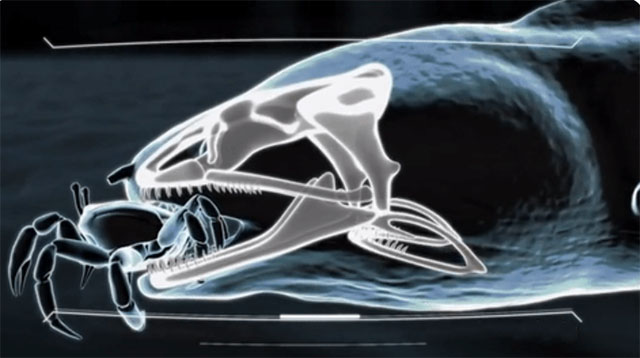
When a snowflake moray eel grabs its prey with its mouth, its exposed jaws, the "pharyngeal jaws" in its throat dart forward to grab the struggling prey and drag it into its stomach. Rita Mehta, an associate professor of ecology and evolutionary biology at the University of California, Santa Cruz, first described this astonishing feeding mechanism in a 2007 paper in the journal Nature.
Not many fish are able to move around on land, because they have no lungs and can only breathe by extracting free oxygen from the water through their gills, so they would suffocate to death without oxygen.
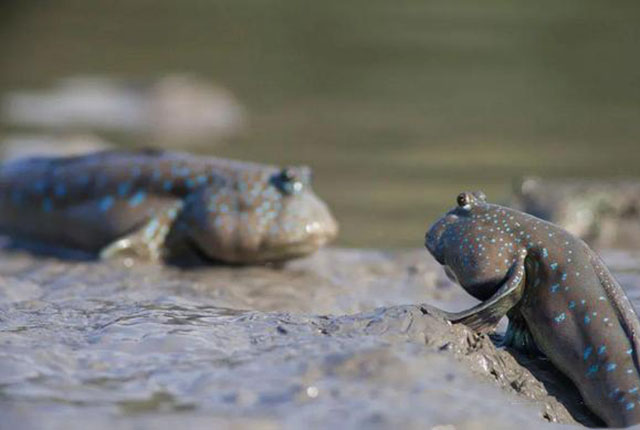
But some fish seem to be transitioning from aquatic to terrestrial, with special organs or tissues that help them breathe on land. Before you get to know the snowflake moray eel, get to know the mudskipper. This fish can also move on land. In addition to breathing with gills, they can also extract oxygen from the air by respiration through their skin and oral mucosa
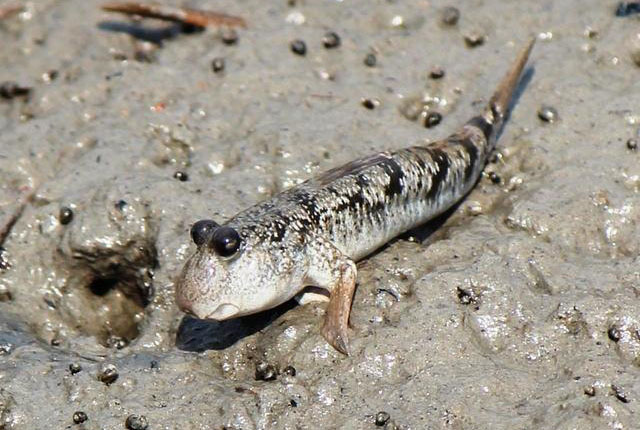
Mudskippers have developed pectoral fins that, like the forelimbs of reptiles, drag the fish's entire body forward, and they can not only jump, but even climb trees. When they climb up a tree, their pelvic fins act as a support, acting like suction cups to help the mudskipper stay up the tree.
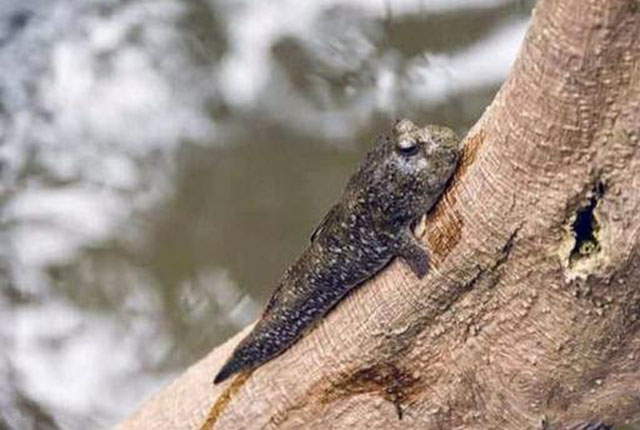
Mudskippers are still fish, and although they can travel on land, they have a lot of fish characteristics, such as breathing mainly through gills and feeding on water. If mudskippers have made their way to land, they are limited to a small patch of beach. Today we're talking about the snowflake moray eel, which is like an invasion of land, but goes further than the mudskipper.
The new study, just published in Experimental Biology, suggests that this structure allows at least one moray eel to forage on land. "Most fish really need water to feed," Mehta said of the first example of a fish that can forage on land without using water.
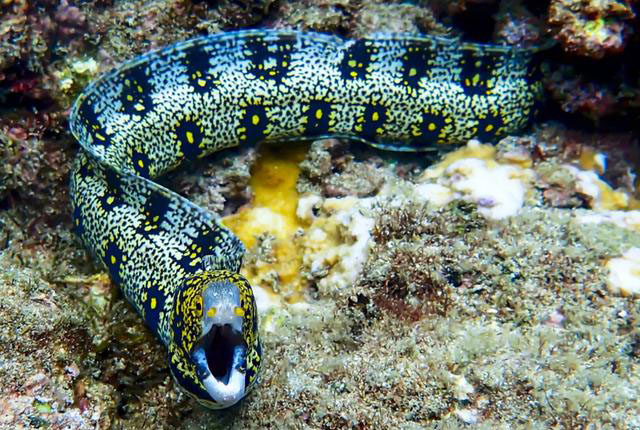
More than a decade ago, Mehta saw reports of snowflake moray eels coming out of the water to catch crabs on the shore, which intrigued her and prompted her to take a closer look and study the Marine animals. "These particular moray eels tend to eat hard-shelled prey like crabs, and I would see reports in the literature of them leaving the water and pouncing on crabs, but it's not clear what happened next."
Even some that are well adapted to an amphibious lifestyle, such as mudskippers, need water to swallow their food. "Mudskiffs come to the mud flats and act like vacuum cleaners to catch their prey." "When they swallow food on land, they suck water and then use the water retained in their mouths to create suction to swallow food," Mehta said.
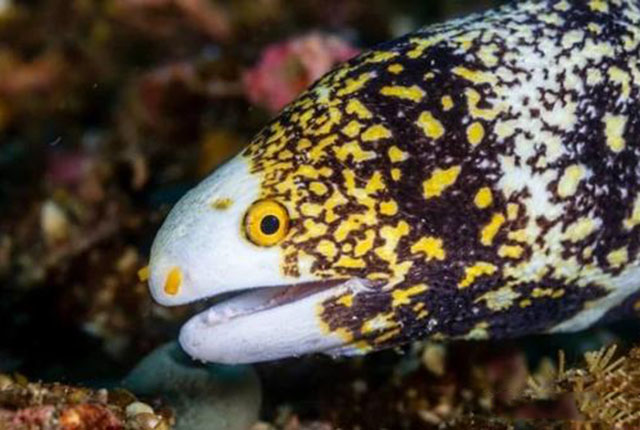
But snowflake moray eels can do just that -- they don't need water to feed, which is their unusual feeding mechanism. "They have highly mobile pharyngeal jaws in their throats," she said. Once moray eels capture prey with their jaws, the pharyngeal jaws grab it again and move it further into the esophagus, a mechanical movement that doesn't rely on water.
Proving that snowflake moray eels can feed on land, however, is no easy task. Mehta and a team of undergraduate students spent five years training seven snowflake moray eels to slide up a ramp, climb onto a platform, grab a fish, swallow it, and return to the water. "They feel safer in the water, so at first they just grab the fish and take it straight back into the water."
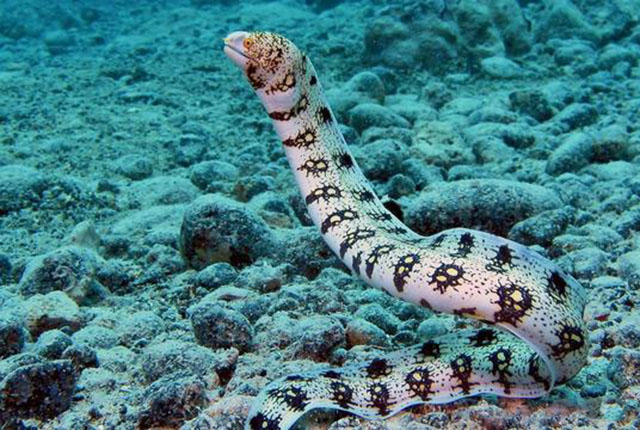
She was helped by co-author Kyle Donohoe, who has animal training experience working with Marine mammals as a research assistant in the Pinniped Cognitive and Sensory Systems Lab next to Mehta's lab at the University of California's Long Sea Lab.
Once the eels were trained to feed on the platform, Mehta documented the unusual feeding behavior on video. Snowflake moray eels forage just as well on land as they do in water, she says. "So these particular moray eels can use very different environments to get food resources."
If the earth's land animals disappear in the future, the first sea animals to make landfall after a long hiatus are likely to be snowflake moray eels. Because not only could they walk to land, but they also had an efficient way of eating, and after a long evolutionary period, maybe the earth would be full of strange animals with "hands" in their throats...
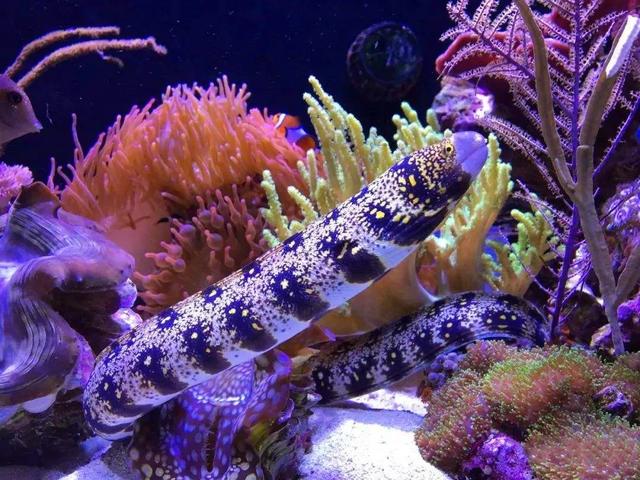
Once the eels were trained to feed on the platform, Mehta documented the unusual feeding behavior on video. Snowflake moray eels forage just as well on land as they do in water, she says. "So these particular moray eels can use very different environments to get food resources."
If the earth's land animals disappear in the future, the first sea animals to make landfall after a long hiatus are likely to be snowflake moray eels. Because not only could they walk to land, but they also had an efficient way of eating, and after a long evolutionary period, maybe the earth would be full of strange animals with "hands" in their throats...